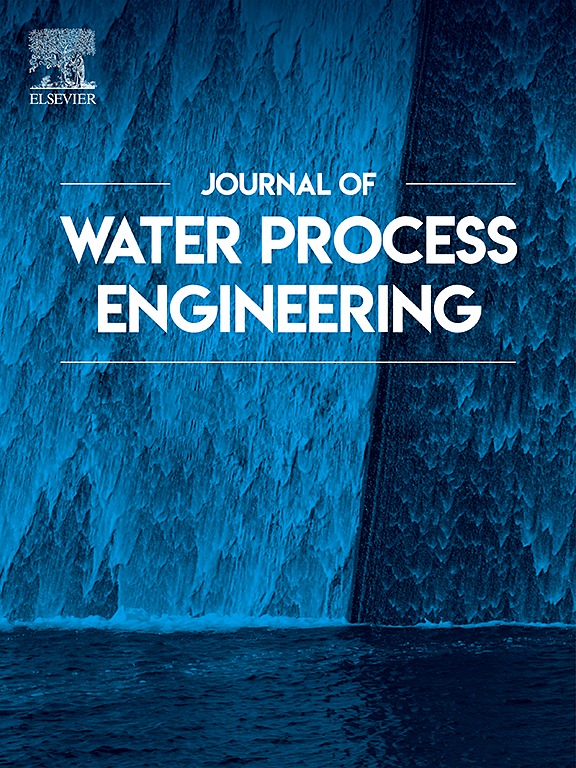一个受生物启发的阶梯状竖琴雾水收集器。2。施工,模拟和现场测试
IF 6.3
2区 工程技术
Q1 ENGINEERING, CHEMICAL
引用次数: 0
摘要
设计并在受控实验室条件下进行测试的雾水收集器原型进行了升级并在现场部署。它是使用市售材料建造的,其模块化3D结构既提高了抗风破坏的稳定性,又便于现场部署。灯丝条的梯状排列允许一定程度的重叠,同时促进灯丝暴露于气流,增加了采样空气的体积和收集雾滴的概率。在2年的时间里,将设计的集热器与其他两种三维雾采集器进行了比较,显示出产量提高了4倍。本文章由计算机程序翻译,如有差异,请以英文原文为准。
A bioinspired ladder-like harp fog water collector. II. Construction, simulations and field testing
A fog water collector prototype devised and tested under controlled laboratory conditions was upscaled and deployed in the field. It was built using commercially available materials, and its modular 3D structure both improved the stability against wind disruptions and facilitated its field deployment. The ladder-like arrangement of the filament strips allowed for a certain level of overlap while facilitating the exposure of the filaments to the wind flow, increasing the volume of air sampled and the probability of collecting fog droplets. The designed collector was compared with two other three-dimensional fog harvesters during a 2-year period, showing a to four-fold yield improvement.
求助全文
通过发布文献求助,成功后即可免费获取论文全文。
去求助
来源期刊

Journal of water process engineering
Biochemistry, Genetics and Molecular Biology-Biotechnology
CiteScore
10.70
自引率
8.60%
发文量
846
审稿时长
24 days
期刊介绍:
The Journal of Water Process Engineering aims to publish refereed, high-quality research papers with significant novelty and impact in all areas of the engineering of water and wastewater processing . Papers on advanced and novel treatment processes and technologies are particularly welcome. The Journal considers papers in areas such as nanotechnology and biotechnology applications in water, novel oxidation and separation processes, membrane processes (except those for desalination) , catalytic processes for the removal of water contaminants, sustainable processes, water reuse and recycling, water use and wastewater minimization, integrated/hybrid technology, process modeling of water treatment and novel treatment processes. Submissions on the subject of adsorbents, including standard measurements of adsorption kinetics and equilibrium will only be considered if there is a genuine case for novelty and contribution, for example highly novel, sustainable adsorbents and their use: papers on activated carbon-type materials derived from natural matter, or surfactant-modified clays and related minerals, would not fulfil this criterion. The Journal particularly welcomes contributions involving environmentally, economically and socially sustainable technology for water treatment, including those which are energy-efficient, with minimal or no chemical consumption, and capable of water recycling and reuse that minimizes the direct disposal of wastewater to the aquatic environment. Papers that describe novel ideas for solving issues related to water quality and availability are also welcome, as are those that show the transfer of techniques from other disciplines. The Journal will consider papers dealing with processes for various water matrices including drinking water (except desalination), domestic, urban and industrial wastewaters, in addition to their residues. It is expected that the journal will be of particular relevance to chemical and process engineers working in the field. The Journal welcomes Full Text papers, Short Communications, State-of-the-Art Reviews and Letters to Editors and Case Studies
 求助内容:
求助内容: 应助结果提醒方式:
应助结果提醒方式:


